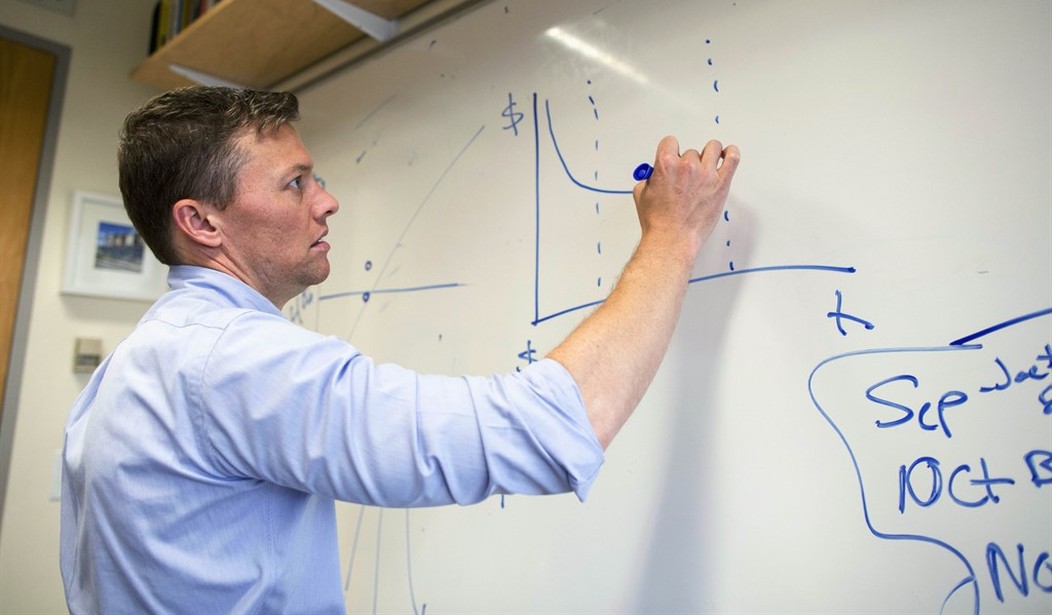On one hand, college must be a breeze these days, since actually learning something no longer appears to be a requirement on many campuses. On the other hand, when institutions of higher education are on perpetual crusades against racism, sexism, and whatever other “isms” are currently in vogue, the list of potential targets will inevitably grow short. That, of course, is bad for business. After all, no one wants to get all geared up for the Two Minutes Hate with their best piercings and signs, only to find that the mass hysteria has been canceled for lack of something to protest. And so, the woke prophets must look further and further afield to find targets for their ire.
The latest offender? Whiteboards. Yes, whiteboards. Those things hanging in classrooms and meeting rooms around the nation. Those things you stare at while you try to keep your eyes open and your attention focused while also trying not to be too obvious about peeking at your phone. Whiteboards in all their utilitarian, multi-colored-marker glory, do, in fact, perpetuate racism.
“Malarkey!” you say. Not true, I say. We have a study that proves it. And if you can’t trust a study, what can you trust?
Campus Reform notes that last month, Physical Review Physics Education Research published “Observing Whiteness in Introductory Physics: A Case Study.” The study observed three students working on a physics problem. The aim was to determine how “whiteness” is present in the academic world. See what I mean about running out of targets?
The study’s co-author, W. Tali Hairston, who is the director of community organizing, advocacy, and development at Seattle Presbytery, told Campus Reform that whiteboards are not “inherently racist.” But “Whiteboards can be racist like how housing, employment, and the judicial systems were found to contain racist practices. Our findings support other studies that have found the study of physics to include racism and sexism.”
Related: Norwegian Study Will Determine if White Paint Is Racist
Apparently, the problem lies not so much in the fact that the boards are white, but that they are the focal point of a classroom. In other words, people are forced to stare at or use something in order to successfully complete their studies. This reinforces whiteness. The study says in part:
Whiteboards display written information for public consumption; they draw attention to themselves and in this case support the centering of an abstract representation and the person standing next to it, presenting. They collaborate with white organizational culture, where ideas and experiences gain value (become more central) when written down.
Allegedly, when students use whiteboards, they are forced to draw attention to themselves which may “portray the characteristics of whiteness.” And the fact that the boards really are white probably doesn’t help. The authors should be careful. If they keep reaching this far, they are going to pull some muscles.
Lest you think I am making this up, and oh, how I wish that was the case, feel free to peruse the study at your leisure here.
So obviously, this study is not about the boards but what the boards represent. And the problem that the authors and many others have with physics and math is that those fields are by nature immutably objective. Gravity is a fact of life, whether you are white, black, Asian, or Hispanic. Or is that Latino? Or Latinx? Never mind. The point is that the laws of physics are the same for everybody.
That being the case, physics and math are not fertile academic grounds for issues such as racism, sexism, transgenderism, fat acceptance, or whatever the cause du jour happens to be. But if you are in the business of CRT or social justice, you have to shoehorn all of those issues in one way or the other. Physics and math must be made racist and there can be no corners of academia that remain unwoke.
“Narrative over knowledge!” our cultural overlords proclaim. While the narrative will promote the “feels” among students, it denies them the use of critical thinking. And one must ask why such people want to create obstacles to learning by constantly erecting social justice roadblocks. It’s almost as if they are terrified over the possibility of students questioning things or thinking for themselves.










Join the conversation as a VIP Member